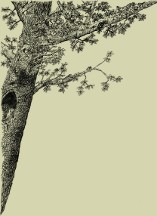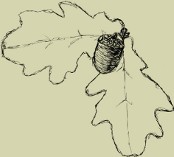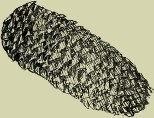42 41 40 39 38 37 36 35 34 33 32 31 30 29 28 27 26 25 24 23 22 21 20 19 18 17 16 15 14 13 12 11 10 9 8 7 6 5 4 3 2 1
Issue 24 (1994)
Contemporary classification of biotic and abiotic wood degradation factors is presented in two aspects: etiological and symptomatical one.
Biotic interaction between xylobionts of birch: Fomes fomentarius and Piptoporus betulinus were investigated, depending on the environmental conditions of growth. The conditions studied were: temperature (in the range of 15-30°C), relative air humidity (58 to 100%) and the pH value (3.17 to 9.54). A significant influence of temperature and a minor influence of relative air humidity was found. Surprisingly strong buffering properties of the fungus P. betulinus were discovered. Similar diameters of colonies of fungi were observed for the range of conditions from acidic (pH = 3.2) to alkaline (9.6). Poor tolerance to strongly acidic pH was found for F. fomentarius. Cellulolitic and lignolitic activity in single to mixed cultures was determined.
Miniature beech wood samples were exposed under the laboratory conditions to the actions of the Chlorhormidium flaccidum and Chlorococcum lobatum Algae. After the exposition period changes in the wood tensile strength along fibres were determined. A slight statistically proved effect of aerophytes on a wood strength weakening in this respect was observed.
During four and eight weeks of contact of pine wood (Pinus sylvestris L.) with gleysoil under anaerobic conditions colonization of wood by bacteria, actinomycetes and Deuteromycotina was observed. It was found after eight weeks that aerobic cultures of cellulytic bacteria: Bacillus sp., mesophilic and thermophilic Clostridium so., cellulolytic actinomycetes Micromonospora s. cellulolytic fungi Aspergillus sp. and Penicillium sp, could colonize pine wood. The following bacteria also were present inside wood: nitrifying, ammonifuing, sulphate reducing Clostridium sp., iron reducing anaerobic bacteria and iron oxidising Thiobacils ferrooxidans (only after four weeks).
The decay of Eucalyptus viminalis wood after steam-explosion pretreatment by anaerobic thermophilic and cellulolytic Clostrudium thermocellum bacteria diring wood colonization was examined. Degradation pattern of wood vessels on basic ultramicroscopic appearances (SEM, CLSM, TEM) was discussed.
The annual tree-rings constitute a record of wood growth conditions prevailing in the given year. Reading of this record enables to determine the age given wood with the accracy of one year. Possibilities of using the annual rings of ancient wood objects are presented on an example of the dendrochronological results in the architecture of the Easter Pomerania. Factors affecting the interpretation of wood dating results are discussed.
Investigations on the fungitoxic value of a home-made wood preservative of the CCB type in relation to wood destroying fungi causing brown, white and soft rot, with and without leaching were carried out. The agar-plate (screening), agar-block (for Basidiomycotina) as well as soil-block method (for Ascomycotina and Deuteromycotina) were applied. A wide fungitoxic activity range of the preparation in question has been proved.
The penetration into fir wood by four waterborne preservatives and one oil preservative were investigated. The influence of time immersion (15, 30, 60 min), moisture content of wood (12, 28%), sap- and heartwood on the results of impregnation were determined. The performance of treatment fir wood proved to be comparable to spruce wood. Limited penetration f preservatives into fir wood was caused by reduction of capillarity.
The investigation aimed at the analysis of the characteristics of decay in rattan by the electron scanning microscope analysis. The black pitch spots as well as the occurrence of light brown and light blue spots signal the development of wood — destroying fungi.
Microscopic analysis of the entire prices of beech (Fagus sylvatica L.) logs dote provides evidence of the occurrence of its first phase in the form of a membranous layer on the scalariform perforation plate and a variability of manifestations of other dote phases.
Birch and alder wood containing about 75% of polystyrene has been tested in laboratory conditions on the durability against fungi causing brown, white and soft rot and also on the moulds occurrence. 14 years lasting investigations made in natural conditions in contact with the soil on the durability of composites obtained form pine, beech and alder wood containing polystyrene in amounts above 100% are presented.
Birch wood (Betula verucosa) from 24 year old trees was used to produce a wood-polymer composite with application of styrene. Special consideration was paid to the wood density of obtained birch-wood-polystyrene composite. Thermal polymerization with the use of set of initiators and catalysts was used in the process. Quality of obtained composite was evaluated by means of measurement following properties. Density, dimensional stability, absorbability, hardness, static bending strength at two moisture content levels.
This investigation has been focused on the variation in length of early- and latewood tracheids in Scots pine wood belonging to different tree growth classes in even-aged forest stand (about 50 years old) growing in western Poland (52°33′ N and 16°50′ E). Variation of the tracheids length at different heights and distance from the pith could be studied. A total of 45,000 tracheids have been measured. The juvenile wood tracheids are much shorter than mature according to Sanio's law. The lower the three growth class the shorted period necessary to reach maximum trachoeid length. Maximum tracheids length tends to increase as tree growth classes rises up. Strong negative correlation exists between width of annual rings and tracheids length in lower half of the stem.
An attempt has been undertaken to analyze quality of grown by Scots pines (Pinus sylvestris L.) wood representing three biological classes in pure pine stands, namely: predominant, dominant and codominant trees accordingly to the Kraft's classes. Efforts were also made to determine effect of trees age on the chosen anatomical properties and density of wood in view of its quality at pines representing particular biological glasses in investigated forest stands. Material for experiment has been Scots pine wood from peripheral zone, grown in conditions of Mixed Fresh Forest from Great Poland terrain. It has been found that the structure and density of wood are influenced by the social position of the tree in forest stand, that is biological class and also by the forest stand age. The position of the tree in forest stand, that is biological class and also by the forest stand age. The forest stand age, social position of tree in forest stand and also bound with that dimensions of the crowns (length and height) could be taken as symptoms of the usable maturity of wood tissues.
Components of essential oils from foliage (leaf and needles) were analyzed by gas chromatography. Determined mono- and sesquiterpenes and terpenes served for the estimation of four genera (Juniperus, Pinus, Chamaecyparis, Abies) of wood plants. Differences in the chromatographic results related to occurrence of significant compounds are considered as a diagnostic parameter. Formation of separated clusters and relevant terpenes is presented by the principal component analysis. Pattern recognition techniques were applied for classification of the species to four genera with a total classification ability of 89%.
The multivariate data of Pinus sylvestris and Pinus nigra terpenic GC/MS profiles were treated by the explanatory data analysis. The computer approach shows the separation of the species by means of essential oil compositions; the main distinctive feature is content of Camphene, α-Pinen, Δ-3-Karen, Spathulenol, several sesquiterpenes, Dodecanoid acid ethyl ester. It became apparent that the more careful analysis of the terpenoid compounds content is desirable (also after considerable reduction of number of variables, in the case of the applied headspace technique) in diagnosis of wood species and for evaluation o their resistance or reaction to the changed environmental conditions.
Data concerning cutting resistance in the case of slicing of the black locust, published so far, are far from complete. For this reason it seems advisable to investigate this parameter. The results were presented in the form of a dependence of cutting force Ps/b, thrust force Po/b and specific cutting energy on chip thickness g for chosen cutting angles.















 Download PDF
Download PDF